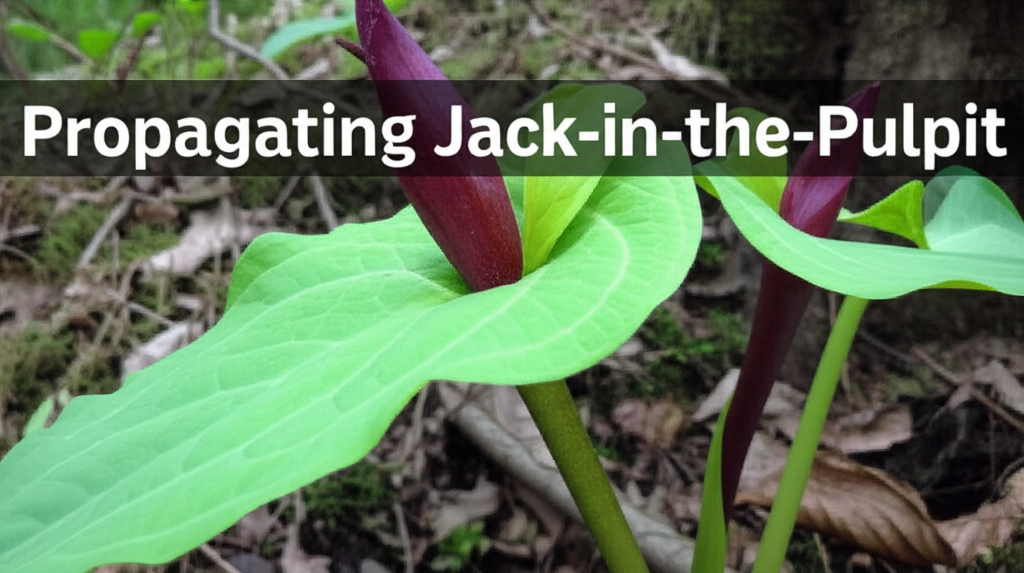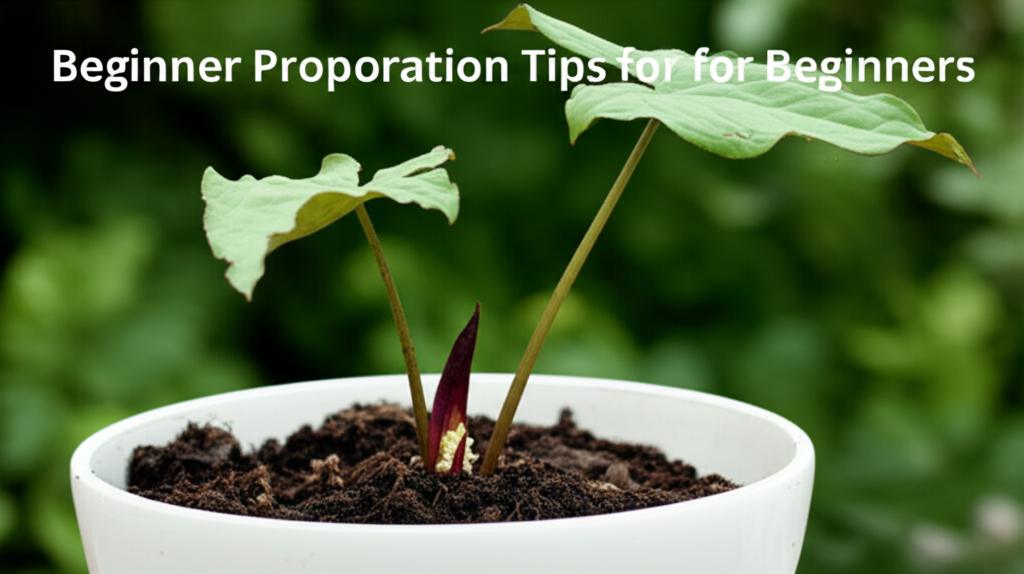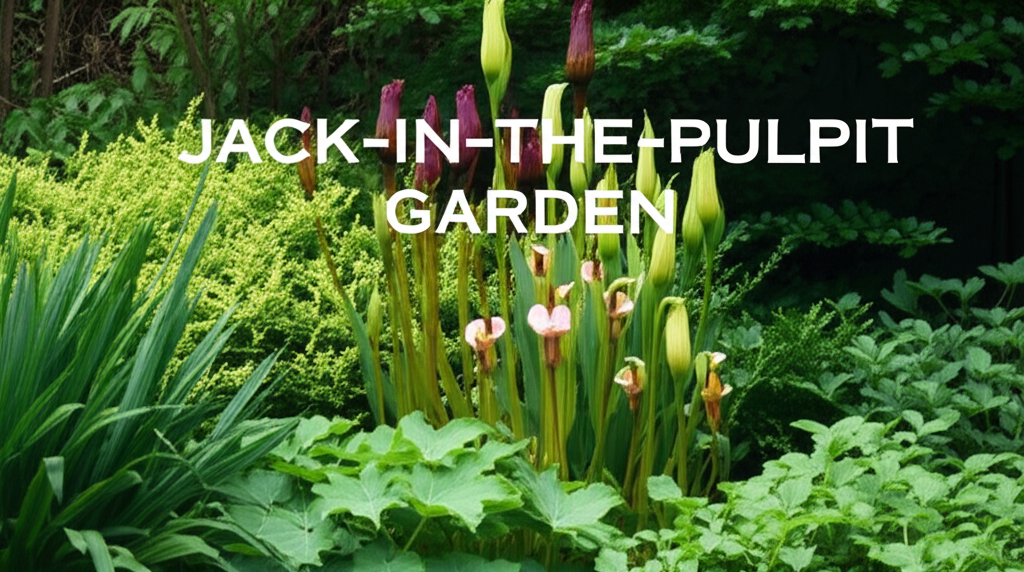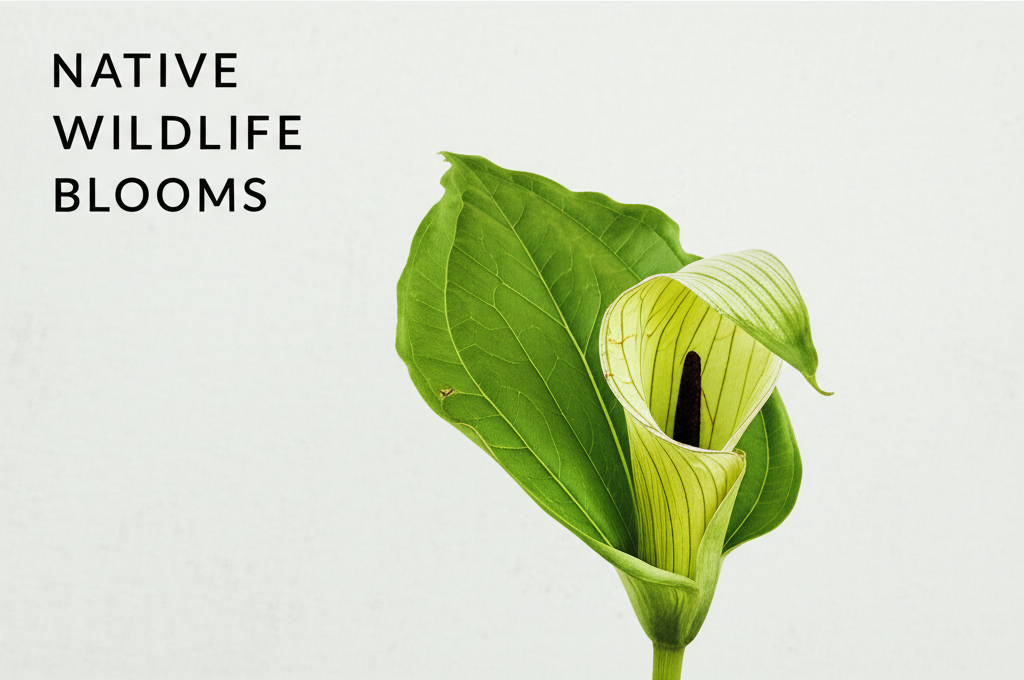Unearthing the Secrets of Jack-in-the-Pulpit Propagation
The Jack-in-the-Pulpit (Arisaema triphyllum) is a captivating woodland native, instantly recognizable by its unique hooded spathe and spadix, often likened to a preacher in its pulpit. Its intriguing appearance and ecological significance make it a sought-after plant for native plant enthusiasts and shade garden designers. While it thrives in its natural habitat of moist, shady woodlands, propagating this fascinating plant at home can be a rewarding endeavor, even for beginners. This comprehensive guide will delve into the various methods of Jack-in-the-Pulpit propagation, offering clear, actionable tips to help you successfully cultivate these woodland jewels.
Understanding the Jack-in-the-Pulpit Lifecycle

Before embarking on propagation, a basic understanding of the Jack-in-the-Pulpit’s life cycle is beneficial. These perennial plants grow from a corm, a bulb-like structure that stores nutrients. They typically emerge in early spring, producing a single, umbrella-like leaf stalk. This stalk often bears two trifoliate leaves. In the center of these leaves rises the iconic inflorescence, the spathe (hood) and spadix (the “jack”).
After flowering, the spathe wilts, and a cluster of bright red berries develops on the spadix. These berries are a crucial part of the plant’s natural propagation, being dispersed by birds and other wildlife. The plant then dies back to the ground by late summer or early autumn. Crucially, Jack-in-the-Pulpits exhibit a fascinating sex change throughout their lives. Younger plants are typically male, producing pollen. As they mature and accumulate energy reserves in their corm, they can transition to a female phase, producing berries. Older, robust plants may even become monoecious, producing both male and female flowers on separate stalks in the same year, or even functionally hermaphroditic. This understanding of their reproductive biology is key to successful propagation.
Methods of Jack-in-the-Pulpit Propagation
There are several effective methods for propagating Jack-in-the-Pulpits, each with its own advantages and timelines. For beginners, starting with division or offsets is often the most straightforward approach.
1. Division of Corms (The Most Reliable Method for Beginners)
This is arguably the most successful and widely recommended method for propagating established Jack-in-the-Pulpit plants. As a Jack-in-the-Pulpit matures, its corm will naturally produce smaller offsets, or “bulblets,” around its base. These offsets can be carefully separated and planted individually.
Steps for Corm Division:
- Timing is Key: The ideal time to divide corms is in the late summer or early autumn, after the plant has completely died back to the ground. This ensures the corm has replenished its energy stores and the plant is dormant, minimizing transplant shock.
- Gentle Excavation: Carefully dig around the parent plant, exposing the corm. Use a trowel or hand fork, working at a safe distance from the corm to avoid damaging it or its offsets.
- Separating Offsets: Once the corm is visible, gently tease apart the smaller offsets from the main corm. They should have their own small roots attached. If they are tightly bound, a clean, sharp knife can be used for separation, but try to preserve as much of the root system as possible.
- Inspection and Preparation: Examine the parent corm and offsets for any signs of rot or disease. Trim away any damaged or mushy parts. Allow the separated corms to air dry for a few hours in a shaded, well-ventilated spot. This helps the cut surfaces callous over, preventing fungal infections.
- Planting the Corms: Plant the separated corms immediately or store them in a cool, dry place in a breathable material like peat moss or vermiculite until spring. When planting, position the corm with the pointed end (where new growth emerges) facing upwards. Plant them at a depth of about 4-6 inches, in well-draining soil amended with organic matter.
- Watering and Mulching: Water thoroughly after planting. Apply a layer of mulch (leaf mold, compost, or shredded bark) around the planting area to retain moisture, suppress weeds, and protect the corms from extreme temperature fluctuations.
2. Seed Propagation (A Patience-Building Endeavor)
Propagating from seed is a natural process for Jack-in-the-Pulpits but requires significant patience. Seeds are produced in the colorful berry clusters in late summer.
Steps for Seed Propagation:
- Seed Collection: Collect the ripe berries in late summer or early autumn. Gently crush the berries to extract the seeds. Rinse the seeds thoroughly to remove any remaining pulp, which can inhibit germination and promote rot.
- Stratification: Jack-in-the-Pulpit seeds require a period of cold, moist stratification to break dormancy. This mimics the natural winter conditions they experience.
- Cold Stratification Method: Mix the cleaned seeds with a sterile, moist medium such as peat moss, vermiculite, or sand. Place this mixture in a sealed plastic bag or container and store it in the refrigerator (around 35-40°F or 1-4°C) for at least 3-4 months.
- Sowing the Seeds: After stratification, sow the seeds in a well-draining seed-starting mix. They can be sown in pots, seed trays, or directly into a prepared garden bed. Sow them about 1/4 inch deep.
- Germination and Early Growth: Germination can be erratic and may take anywhere from several months to over a year. The seedlings will be very small and will typically produce a single leaf in their first year.
- Transplanting Seedlings: Once the seedlings are large enough to handle (usually after their first or second year), they can be carefully transplanted to their permanent garden location. Be aware that it can take 4-7 years for a plant grown from seed to reach flowering size.
3. Propagation from Leaf Cuttings (Less Common, More Advanced)
While not as common or as reliably successful as corm division, it is theoretically possible to propagate Jack-in-the-Pulpits from leaf cuttings. This method is generally considered more advanced and less fruitful for beginners.
Considerations for Leaf Cuttings:
- Timing: The best time to attempt this is when the plant is actively growing, typically in late spring or early summer.
- Procedure: Select a healthy, mature leaf. Cut the leaf stalk cleanly at its base. You can try to induce rooting by dipping the cut end in rooting hormone and planting it in a moist, well-draining medium.
- Success Rate: Success rates for this method are generally low, and it requires consistent high humidity and careful management to prevent rot.
Key Facts and Comparison of Propagation Methods
To help you choose the best method for your needs, here is a comparison of the primary Jack-in-the-Pulpit propagation techniques.
| Propagation Method | Ease for Beginners | Time to Flowering | Success Rate | Primary Material Needed |
|---|---|---|---|---|
| Corm Division | High | 1-2 years | Very High | Mature Jack-in-the-Pulpit corms with offsets |
| Seed Propagation | Low | 4-7 years | Moderate (dependent on stratification) | Ripe Jack-in-the-Pulpit seeds |
| Leaf Cuttings | Low | N/A (unreliable) | Low | Healthy Jack-in-the-Pulpit leaves |
Optimal Growing Conditions for Jack-in-the-Pulpits
Regardless of the propagation method chosen, providing the right growing conditions is paramount for the health and success of your Jack-in-the-Pulpits.
Light Requirements:
Jack-in-the-Pulpits are woodland plants and prefer dappled shade or partial shade. Direct, intense sunlight, especially during the hottest parts of the day, can scorch their leaves. Aim for locations that receive morning sun and afternoon shade, or are consistently shaded by taller trees or shrubs.
Soil and Moisture:
These plants thrive in moist, well-draining soil rich in organic matter. They often grow naturally in humus-rich, moist woodland soils. Amend your planting soil with compost, leaf mold, or well-rotted manure to improve its structure and fertility. Consistent moisture is crucial, especially during the growing season. Avoid waterlogged conditions, as this can lead to corm rot. Aim for soil that is consistently damp but not saturated.
Mulching:
A good layer of organic mulch around the base of the plant is highly beneficial. Mulch helps to retain soil moisture, regulate soil temperature, suppress weeds, and gradually enriches the soil as it decomposes. Leaf mold, shredded bark, or compost are excellent choices for mulching.
pH Preference:
Jack-in-the-Pulpits generally prefer slightly acidic to neutral soil pH, typically between 5.5 and 7.0.
Troubleshooting Common Propagation Issues
Even with the best intentions, you might encounter a few common challenges when propagating Jack-in-the-Pulpits.
Rotting Corms:
This is often caused by overwatering or poorly draining soil. Ensure your planting medium is well-aerated and avoid letting the corms sit in soggy conditions. If storing corms, ensure they are dry and have calloused over before storing, and check for any signs of rot periodically.
Lack of Germination (Seeds):
Inconsistent or insufficient stratification is a common culprit. Ensure the seeds have had a minimum of 3-4 months of cold, moist stratification. Patience is also key; some seeds can take over a year to germinate.
Poor Growth or No Flowers:
This can be due to insufficient light, poor soil conditions, or the plant not being mature enough. Ensure your plants are in an appropriate shady location with nutrient-rich soil. Remember that plants grown from seed will take several years to mature and flower.
Pros and Cons of Jack-in-the-Pulpit Propagation Methods
Here’s a breakdown of the advantages and disadvantages of the primary propagation methods.
| Propagation Method | Pros | Cons |
|---|---|---|
| Corm Division | High success rate, faster to flowering, readily available if you have an established plant, relatively easy for beginners. | Requires an existing mature plant, can potentially stress the parent plant if not done carefully. |
| Seed Propagation | Allows for genetic diversity, can produce many plants from a single source, no risk of stressing a parent plant. | Requires significant patience (years to flowering), germination can be unpredictable, seeds need stratification. |
| Leaf Cuttings | Can potentially create new plants from a single leaf, useful if you only have a few plants. | Very low success rate, difficult to maintain humidity, prone to rot, not recommended for beginners. |
Conclusion: Cultivating Your Own Woodland Gem
Propagating Jack-in-the-Pulpits is a rewarding journey that connects you with the fascinating biology of this native woodland plant. For beginners, focusing on corm division offers the most reliable and efficient path to success, allowing you to quickly establish these unique plants in your shade garden. While seed propagation requires a greater investment of time and patience, it opens the door to expanding your collection and appreciating the full lifecycle of this botanical wonder. By understanding their needs and employing these proven propagation techniques, you can successfully cultivate your own Jack-in-the-Pulpits, adding a touch of woodland magic to your landscape. Happy propagating!


